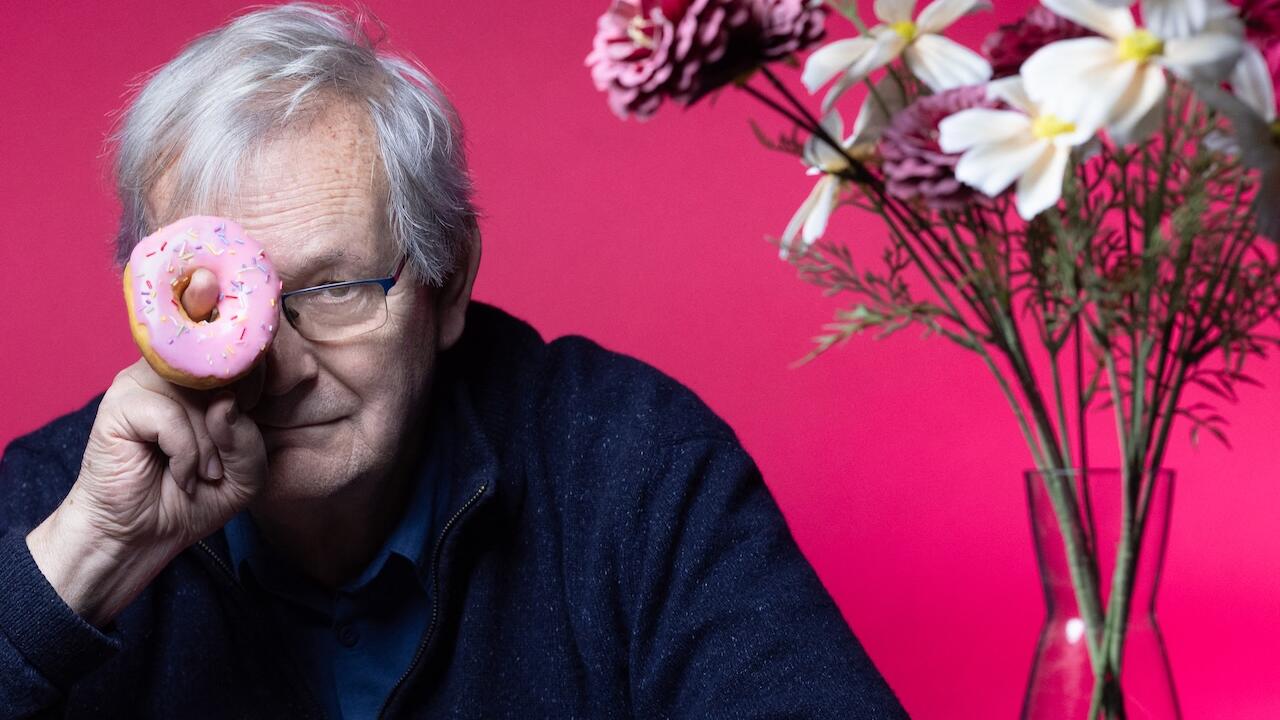Too real
On Spanish writer Enrique Vila-Matas’s recent novel set during dOCUMENTA (13)
On Spanish writer Enrique Vila-Matas’s recent novel set during dOCUMENTA (13)

The incipit of Enrique Vila-Matas’s Kassel no invita a la lógica (2014; The Illogic of Kassel, 2015) doesn’t mention contemporary art. A McGuffin, as the Catalan writer clarifies in the opening lines of his auto-fictional novel set during dOCUMENTA (13) (2012) in Kassel, is a narrative trope with no logical purpose aside from titillating the public’s attention. In Vila-Matas’s case, the McGuffins here are two, Mr. and Mrs. McGuffin, who in the book lure the well-known novelist to dinner with ‘the resolution of the mystery of the universe’. Seduced and amused by the overblown and cryptic proposal, Vila-Matas accepts, only to find that the only cosmos he’s invited to unravel is that of Carolyn Christov-Bakargiev and Chus Martínez, who then ask him to spend three weeks in Kassel playing resident writer of the Chinese restaurant Dschingis Khan, ‘writing there in front of the public’.
With self-professed homage to the peripatetic writings of Robert Walser and Raymond Roussel, Vila-Matas records his wanderings around the artified Hessian town’s ‘logicless paths’, his meetings with (real) artworks, curators and visitors (curiously, no artists), and his ever changing moods in response to dOCUMENTA (13)’s motto: ‘collapse and recovery’. Enrique is a perfect literary ego, with aptly illogical, Sturm und Drang-ish behaviour: a neurotic writer of the literary avant-garde (the real Vila-Matas has over 20 successful novels to his name), initially afraid of his evening crises of gloom and nightmarish mornings at the greasy spoon, and who – after doubting the subsistence of avant-garde literary activity – suddenly falls in love with contemporary art. By turns enthusiastic, Enrique delivers an exalted ‘Lecture to Nobody’ (under the aegis of the Critical Art Ensemble), empathizes with Pierre Huyghe’s ‘incredible, unforgettable’ Untitled in Karlsaue Park, and discovers that ‘I am an indemonstrable truth’ – later comparing this ‘I’ to Huyghe’s equally indemonstrable, yet equally itinerant, dog.
For some years now, contemporary art has made its way into contemporary fiction – one might even say it has become a trend, with writers as diverse as Teju Cole, Michel Houellebecq, Rachel Kushner, Chris Kraus, Ben Lerner and Valeria Luiselli framing real art within fiction. It’s ‘Literature’s Duchamp Moment’, to quote Shaj Mathew in a 2015 article in The New Republic. But as in Donna Tartt’s excruciating novel The Goldfinch (2013) – named after Carel Fabritius’s 1654 painting – existing and invented art alike are often introduced to create a plausible background, an easily identifiable wallpaper or cliché. In a recent interview in Bomb, Vila-Matas says: ‘In my writing, fake names and the names of real writers work much like the photographs in Sebald’s books. […] They have a reality effect.’
The fictionalization and multiplication of the self is classic, in Vila-Matas’s view. The other key figure in the book is curator Chus Martínez, who – as she said in a 2015 conversation with Vila-Matas at the Hangar Bicocca in Milan to celebrate the Italian edition of the book by Feltrinelli – took the title of her 2010 curated exhibition The Malady of Writing after Vila-Matas’s own Montano’s Malady (2002). Martínez’s exhibition featured over 150 narrative books by contemporary artists, whereas in The Illogic of Kassel, Enrique meets Martínez only after her protracted avoidance of her invitee, and after a fairly long series of (fairly macho) descriptions of Martínez’s attractive assistants, who appear instead of the ‘real’ Chus. Martínez wrote me: ‘I would say the truest part of the book is me avoiding, which, of course, he made into a trope. But my biggest shock in reading it was how amazingly he understood that not to meet to “talk” about the exhibition or about “our intentions” was part of an unintended way of avoiding too much self-consciousness.’

When I contacted Vila-Matas to enquire about the role of ‘truth’ in The Illogic of Kassel, he wrote me: ‘Fiction can be much closer to the truth. It’s a form of investigation parallel to the truth of reality, a truth that illuminates areas of reality that the direct approach does not allow us to reach. It is utterly paradoxical.’ So what kind of ‘avant-garde’ art is truly investigated here? In the book, the works Enrique is moved by are mostly mainstream, but also mostly invisible, and thus pieces which seem to beg for subjective descriptions: Tino Sehgal’s This Variation, Ryan Gander’s The Invisible Pull, Susan Philipsz’s Study for Strings, Janet Cardiff & George Bures-Miller’s FOREST (for a thousand years…). Then again, commenting on Tacita Dean’s Fatigues series, (‘among the most elegant [drawings] seen in [his] life’), Vila-Matas notes that it seems strange how in ‘an exhibition about the avant-garde, the closest thing to what could be considered orthodox should make such an impression.’ And here, the author could not resist the temptation to add an artwork of his own making to the list: the imaginary installation The Last Season of the Avant-Garde by Bastian Schneider, which prints out oracular messages to the viewer. In the book, the narrator becomes increasingly real – its object decreasingly so.
‘It seems that many people have been seduced by the way I see the Documenta, by my look without prejudice, absolutely authentic, the look of someone who sees everything from outside, because he doesn’t belong to the mundillo (little world) of contemporary art’. The presumed ‘innocence’ of a writer who often collaborates with Dominique Gonzales-Foerster (as he writes in the essay Marienbad électrique, 2015) and once started an aborted project with Sophie Calle (as he recalls in Exploradores del abismo, 2007) is questionable, while his advocacy of a powerfully captivating style of artwork strikes an easy, albeit sensitive chord. If contemporary art’s publics are growing – and conversely, art (not least, the expansively enacted art of the last Documenta) has come to swallow music, theatre, film, and now (once again) literature – then how can art writing avoid ‘too much self-consciousness’ to expand critical new spaces of imagination beyond those of the art-world reader? In 2015, Vila-Matas was one of the 31 novelists and poets invited by the Guggenheim to participate in Storytelling by contributing essays on individual works on show: his pick was the sculpture Motherland by another Documenta star, Adrián Villar Rojas – nowhere to be found in the museum, but alive in our heads.
After re-reading Vila-Matas’s book, the presence of the author towering over art began to feel like another McGuffin, placed in plain sight to divert our gaze from another logical subject of the book: the act of writing about art as a public performance – familiar ground for a professional art writer. In this key, The Illogic of Kassel can also be read as a scathing parody of the tropes of art writing: literary diversions, déjà-vu, name dropping, insider circulation of the must-see, glorification of ‘the new’, overt sentimentalism and passionate autobiographical references – all of which appear with increasing frequency now that the ‘first person economy’ threatens to overrun the media. Yet, by starting with oneself, can one really generate a heightened impression of sincerity and ecstatic aesthetic involvement? Sehgal’s This Variation, to which Enrique keeps returning, debuted in Kassel one month before These Associations; ‘live encounters’ with individual voices and stories he choreographed in Tate Modern’s Turbine Hall tried both to reconstruct and dramatize the magic of human touch.
In a recent interview for the Italian magazine L’Espresso, Christov-Bakargiev described The Illogic of Kassel as the best review of her Documenta. I can pacifically doubt it. However tired or stale, the format of the review calls for fact-checking and potentially divisive critical assessment, evidence-based reporting on the final appearance of things, exhibition spaces, actual layouts, as well as the presumption of a different temporality. For example, the novel mentions Gander’s ‘breeze’ work The Invisible Pull, but why not Gander’s I Had A Message from the Curator (2012), in which an actor sits in a café by the Karlsaue performing the role of a playwright working on a screenplay? The reality of the review format checks the fictionalizing impulse of ‘event’ anticipation – inflated by promotional press releases and images, evasive curatorial statements, introductory essays, artists’ interviews – i.e., the overwhelming part of how art is now shared and envisaged.
Even in the age of communication technologies designed to generate evidence, a review needs some logic and method – an ‘evidential paradigm’, as Carlo Ginzburg defined research-based interpretation, as well as a concrete way of understanding how history and art history share a common problem – the testimony. ‘Ego-documents’ (as the historian Jacques Presser classified, in 1955, writings in which the ‘I’ is the describing subject) are by definition the least reliable of all historical sources, as they dangerously mix history, memory and narration, and hence confine the past to the realm of imagination. So, if according to Vila-Matas, Documenta was ‘a state of mind’ yet ‘art is what happens to us’, need this be a contradiction? Can we still be remotely interested in describing something that occurs out of our heads, beyond the present tense and self?
Barbara Casavecchia is a writer and contributing editor of frieze. She is based in Milan, Italy.
The Illogic of Kassel, translated by Anne McLean and Anna Milsom, was published by New Directions, New York, in June 2015.












